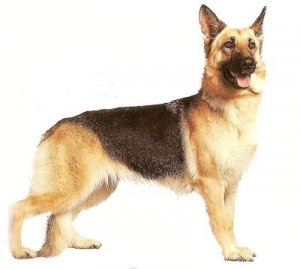
All iLive content is medically reviewed or fact checked to ensure as much factual accuracy as possible.
We have strict sourcing guidelines and only link to reputable media sites, academic research institutions and, whenever possible, medically peer reviewed studies. Note that the numbers in parentheses ([1], [2], etc.) are clickable links to these studies.
If you feel that any of our content is inaccurate, out-of-date, or otherwise questionable, please select it and press Ctrl + Enter.
Acute wet dermatitis (hot spots) in dogs
Last reviewed: 08.07.2025

A hot spot is a warm, painful, swollen area of skin measuring 2.5 to 10 cm (1 to 4 inches) that secretes pus and has a foul odor. The area will rapidly lose hair. The infection will progress if the dog licks or scratches the area. These round areas appear suddenly and quickly enlarge, often within a few hours.
Hot spots can occur anywhere on the body and often occur in multiples. In large dogs with heavy, furry ears, such as Newfoundlands and Golden Retrievers, one of the most common locations for hot spots is under the ears. Hot spots are most common in dogs with heavy coats before shedding season, when wet, dead hairs stick to the skin. Fleas, ticks, and other skin parasites, skin allergies, skin conditions that cause skin irritation, ear and anal gland infections, and poor grooming habits are also factors that trigger the itch-scratch-itch cycle.
Treatment: Hot spots are extremely painful. Your dog will usually need to be sedated or anesthetized before treatment begins. Your veterinarian will clip the affected area, then gently cleanse the skin with diluted povidone-iodine (Betadine) or chlorhexidine shampoo (Nolvasan) and allow the skin to dry. A steroid cream or antibiotic powder (Panolog or Neocort) will then be applied to the skin twice daily for 10 to 14 days. Antibiotic tablets are also usually prescribed. Any underlying skin problems will also be treated.
Your veterinarian may also prescribe a course of oral corticosteroids to control severe itching. A neck collar can be used to prevent your dog from injuring the affected area.
In hot, humid weather, be sure to dry dogs with thick coats after bathing or swimming. Otherwise, the likelihood of developing a hot spot increases.
